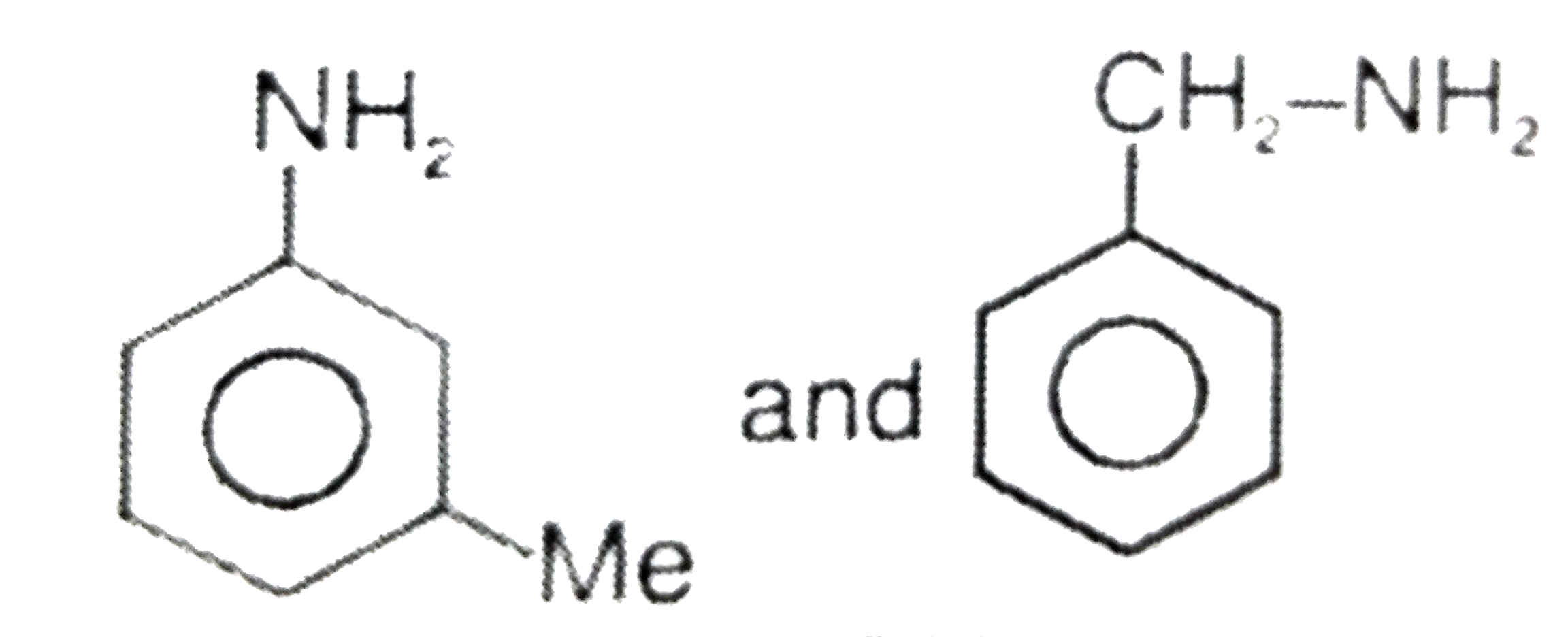1-Propanol and 2- propanol can be distinguished by:
a.Oxidation with alkaline KMnO4 followed by reaction with Fehiling's solution.
b.Oxidation with acidic dichromate followed by reaction with Fehling's solution
c.Oxidation by heating with copper followed by reaction with Fehling's solution.
d.Oxidation with concentrated H2SO4 follwed by reaction with Fehling's solution.
The correct Answer is:C
To distinguish between 1-Propanol and 2-Propanol, we can follow these steps:
1. Identify the Compounds:
- 1-Propanol (CH3CH2CH2OH) is a primary alcohol.
- 2-Propanol (CH3CHOHCH3) is a secondary alcohol.
2. Choose the Oxidizing Method:
- We will use heating with copper (Cu) as the oxidizing agent at a temperature of 300 degrees Celsius.
3. Oxidation of 1-Propanol:
- When 1-Propanol is heated with copper, it gets oxidized to form Propanal (CH3CH2CHO), which is an aldehyde.
- The reaction can be summarized as:
CH3CH2CH2OHCu, 300°C−−−−−−→CH3CH2CHO
4. Reaction with Fehling's Solution:
- The resulting Propanal can then be reacted with Fehling's solution.
- Fehling's solution contains copper(II) ions, which are reduced to copper(I) oxide (Cu2O), forming a red precipitate.
- The reaction is:
CH3CH2CHO+Fehling's solution→Cu2O (red precipitate)+other products
5. Oxidation of 2-Propanol:
- When 2-Propanol is heated with copper, it gets oxidized to form Acetone (CH3COCH3), which is a ketone.
- The reaction can be summarized as:
CH3CHOHCH3Cu, 300°C−−−−−−→CH3COCH3
6. Reaction with Fehling's Solution:
- The resulting Acetone does not react with Fehling's solution, meaning no red precipitate is formed.
- Therefore:
CH3COCH3+Fehling's solution→no reaction
7. Conclusion:
- By comparing the results, we can distinguish between 1-Propanol and 2-Propanol:
- 1-Propanol gives a red precipitate with Fehling's solution.
- 2-Propanol does not give any reaction with Fehling's solution.
Final Answer:
1-Propanol and 2-Propanol can be distinguished by oxidation with copper followed by reaction with Fehling's solution. 1-Propanol gives a red precipitate, while 2-Propanol does not.
- 1-Propanol (CH3CH2CH2OH) is a primary alcohol.
- 2-Propanol (CH3CHOHCH3) is a secondary alcohol.
- We will use heating with copper (Cu) as the oxidizing agent at a temperature of 300 degrees Celsius.
- When 1-Propanol is heated with copper, it gets oxidized to form Propanal (CH3CH2CHO), which is an aldehyde.
- The reaction can be summarized as:
CH3CH2CH2OHCu, 300°C−−−−−−→CH3CH2CHO
- The resulting Propanal can then be reacted with Fehling's solution.
- Fehling's solution contains copper(II) ions, which are reduced to copper(I) oxide (Cu2O), forming a red precipitate.
- The reaction is:
CH3CH2CHO+Fehling's solution→Cu2O (red precipitate)+other products
- When 2-Propanol is heated with copper, it gets oxidized to form Acetone (CH3COCH3), which is a ketone.
- The reaction can be summarized as:
CH3CHOHCH3Cu, 300°C−−−−−−→CH3COCH3
- The resulting Acetone does not react with Fehling's solution, meaning no red precipitate is formed.
- Therefore:
CH3COCH3+Fehling's solution→no reaction
- By comparing the results, we can distinguish between 1-Propanol and 2-Propanol:
- 1-Propanol gives a red precipitate with Fehling's solution.
- 2-Propanol does not give any reaction with Fehling's solution.
1-Propanol and 2-Propanol can be distinguished by oxidation with copper followed by reaction with Fehling's solution. 1-Propanol gives a red precipitate, while 2-Propanol does not.
Topper's Solved these Questions
- REDUCTION AND OXIDATION REACTION OF ORGANIC COMPOUNDSBOOK - CENGAGE CHEMISTRY ENGLISHCHAPTER - REDUCTION AND OXIDATION REACTION OF ORGANIC COMPOUNDSEXERCISE - SUBJECTIVE TYPE
4 Videos
- REDUCTION AND OXIDATION REACTION OF ORGANIC COMPOUNDSBOOK - CENGAGE CHEMISTRY ENGLISHCHAPTER - REDUCTION AND OXIDATION REACTION OF ORGANIC COMPOUNDSEXERCISE - Exercise (Assertion And Reasoning)
10 Videos
- QUALITATIVE INORGANIC SALT ANALYSISBOOK - CENGAGE CHEMISTRY ENGLISHCHAPTER - QUALITATIVE INORGANIC SALT ANALYSISEXERCISE - Viva Voce Questions And Part-C (Analysis Of Cations)
42 Videos
- SOLID STATEBOOK - CENGAGE CHEMISTRY ENGLISHCHAPTER - SOLID STATEEXERCISE - Ex 1.2 (Objective)
9 Videos
Similar Questions
Knowledge Check
1-propanol and 2-propanol can be best distinguished by :
Aoxidation with alkaline KMnO4 followed by reaction with Fehling's solutionBoxidation with acidic dichromate followed by reaction with Fehling's solutionCoxidation by heating with copper followed by reaction with Fehling's solutionDoxidation with conc. H2SO4 followed by reaction with Fehling's solutionPhenol and cyclohexanol can be distinguished by using :
AFeCl3BNaCPCl3DCH3COCl
Propyne and propene can be distinguished by :
View SolutionTwo isomeric ketones , 3- pentanone and 2-pentanone can be distinguished by:
View SolutionTwo isomeric Ketones, 3-pentanone and 2-pentanone can be distinguished by:
View SolutionPropanal and Acetone can be distinguished by testing with
View SolutionH2SandSO2 can be distinguished by
View SolutionGlucose and fructose can be distinguished by
View Solution

 can be distinguish by
can be distinguish by